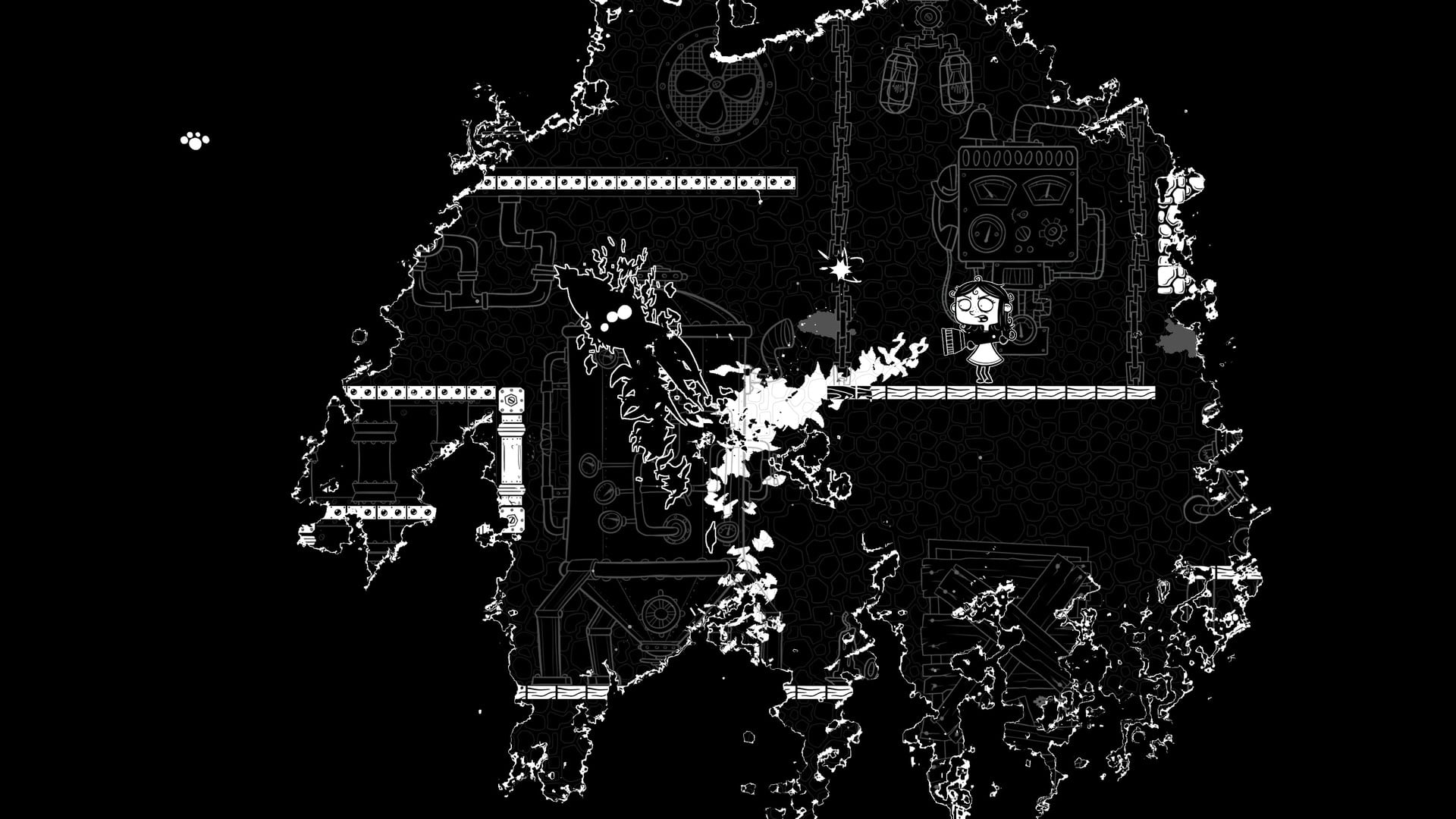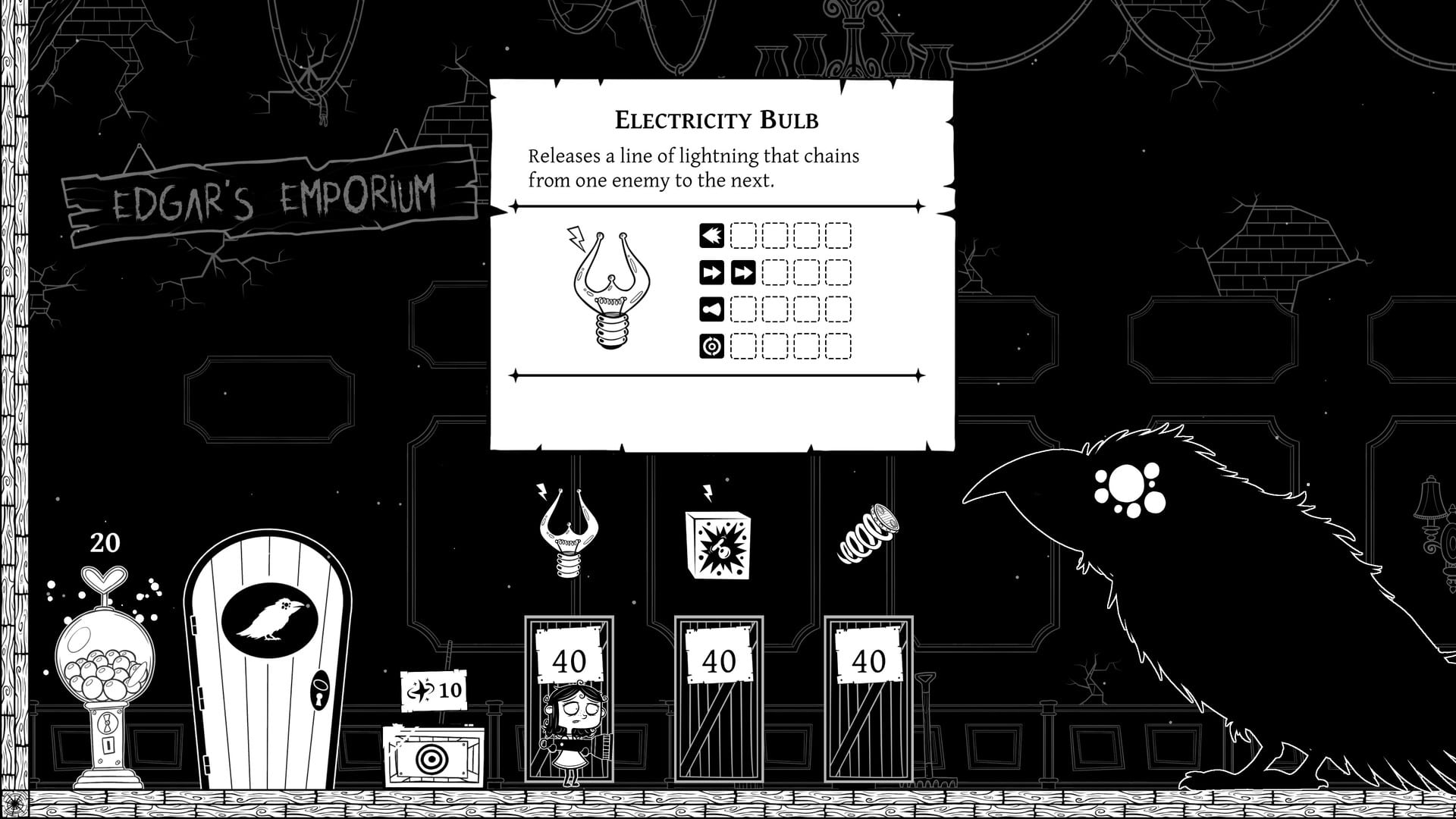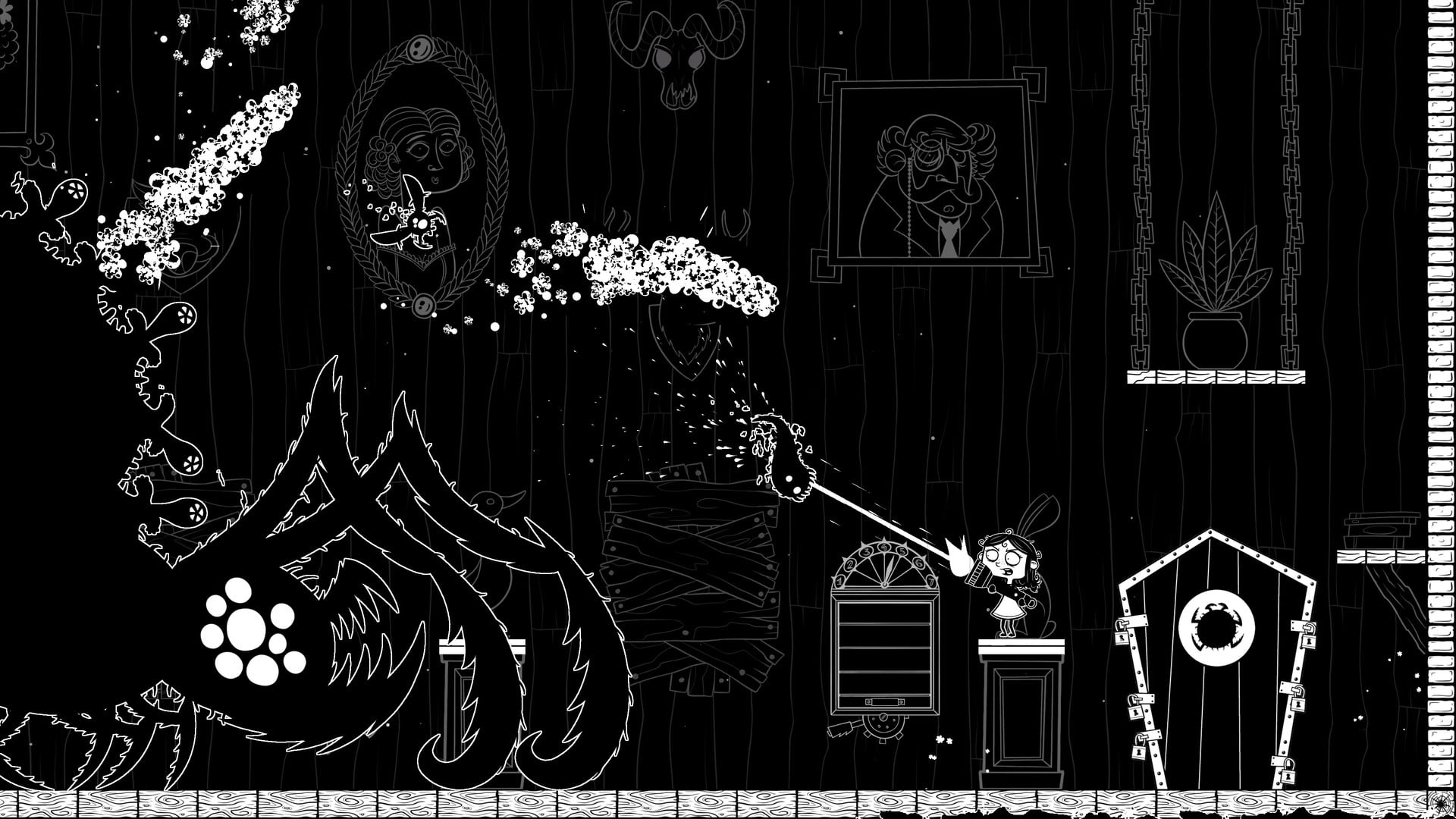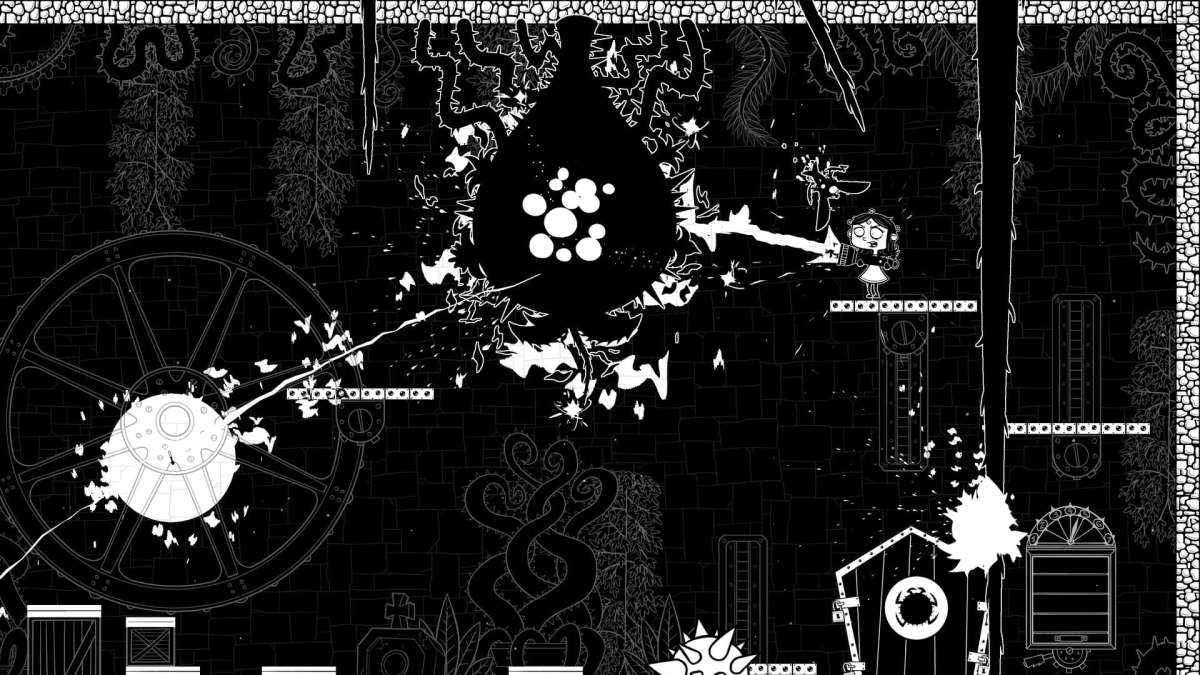Generally speaking, I have no interest in roguelikes or roguelites. I actively avoid them. So it’s actually quite a big deal that I really, genuinely enjoyed playing Eyes in the Dark: The Curious Case of One Victoria Bloom for review. It’s a charming monochrome “roguelight” adventure where deft use of a flashlight and slingshot means the difference between success and defeat, and it does just about everything right.
It’s a Black-and-White World After All
The premise of Eyes in the Dark is that young Victoria Bloom has come to her family’s Bloom Manor, only to discover the entire thing has been engulfed in darkness and overrun with monsters made of that darkness. Victoria must brave the dangers of the semi-randomly generated manor in order to save her grandfather, Victor, and unravel some mysteries about her family tree.
There are a few beautiful hand-drawn cinematics to punctuate major story moments, but the truth is the story is pretty thin and couldn’t keep my attention. Fortunately, none of that matters. What counts is that the atmosphere is charming, and there’s a fairytale-like whimsy to it that kids will enjoy. Victoria doesn’t even technically “die” when she runs out of health; she just gets sent back in time to try again, armed with more knowledge and experience. It’s all about persistence.
Eyes in the Dark shines in the actual gameplay. Bloom Manor comprises a starting hub and then nine named environments that are interconnected. Each of the nine areas has distinct level design, distinct enemy groupings, and a distinct boss, and the level design and the enemies work in tandem to create unique action challenges. For instance, the Garden is a large outdoors area with lots of plant-like monsters, and the Rooftops feels like a gauntlet to the top of one tall vertical area. That being said, the actual rooms are all randomly generated, and they keep things fresh from one run to the next. There is also an optional pseudo-challenge room in each area that rewards you with a selection of nice upgrades.

You always begin your runs in the same starting area, but then you can pick which direction you would like to go in next, offering some choice as to the order in which you complete the nine areas. Although, the game is broken into acts, and in Act I, you only need to complete the first three areas. In Act II, you have to complete six areas. And in Act III, you finally must complete all nine areas and vanquish the final boss to beat the game. However, after that, Act IV unlocks, which provides a wide array of new ways to further remix the gameplay and extend the replaybility. One full run can last between two and three hours.
Victoria has a few default abilities that you control with a twin-stick control scheme. These include her flashlight to deal damage to enemies and literally remove darkness, a slingshot with regenerating ammo to do extra damage, a basic jump, and a dash that features invulnerability. There are many different types of flashlight bulb and slingshot ammo that function differently, and on top of that, there are a wide array of other modifiers you can equip to your weapons or to Victoria to customize her kit. Out of all the different weapons I tried, all of them felt useful, and many of the customization options felt like they had strategic value.
I typically went for light bulbs that gave me damage at range, like one that shot out exploding balls of light. But there is also a flamethrower-ish short-range option and several spray-and-pray options. Depending on the bulb you have equipped, the specific distance at which light hits enemies might dramatically affect the damage output, so even your positioning plays a fun, important strategic role.
During my game-winning run, I used a light bulb that let me “daze” (stun) enemies, and after piling on modifiers, I accidentally stumbled upon a build that let me stun-lock most of the bosses, even including the final boss at some points. I was even getting healed as I damaged them! I felt like a pint-sized lord of light and darkness, and it was a perfect culmination of everything I had learned to that point.

The ability to heal is actually not easy to come by in the beginning. You either need to pay a merchant for health, (You can also buy other items on a rotating basis from the merchant.) or you can find some rarely in chests. So it’s important to allocate funds (“sparks”) to healing while you’re busy trying to upgrade yourself, unless you want extra challenge.
Another big aspect of strategy in Eyes in the Dark is that, upon entering a new area, you must select a pair of a new boon and new detriment to affect gameplay. For example, you might unlock the full game map to view, but now enemy projectiles travel faster. Or you can restore your health before each boss fight, but now all enemies explode after dying. Sometimes, you’ll get a really advantageous pairing, and sometimes they’re all kind of awful; rolling with the punches is a big part of the fun.
And of course, at the end of a run, whether you’re victorious or doomed, you will accumulate “knowledge” that you can spend on permanent unlocks. These include things like randomly generated bonus items at the start of a run, new items that can be sold by the merchant, and new boons that can be selected during area transitions. Honestly, I beat the game without even having to unlock many of these perks, though I did buy one of the most expensive area-transition boons, which made it possible to heal every time I collected a spark.
The most refreshing thing about Eyes in the Dark is that it feels overwhelmingly fair. I beat the game in around 10 hours, but most of my deaths occurred just because I let myself get careless. Eyes in the Dark is excellent at providing distinct enemy types whose patterns you quickly learn and adapt to, and the monochrome art style and art design make it so easy to pick out enemy projectiles and other threats even during a chaotic scene. Combine that with rather generous controls, where it’s possible to upgrade Victoria to get multiple consecutive jumps and invulnerable dashes, and I always felt in control of the action. There was no sense of frustration, and I was always eager to try again after a defeat.

I truly have little negative to say about Eyes in the Dark. For one thing, the controls can feel a bit floaty in spots, but sometimes that works to your advantage and helps you navigate a bit faster. Also, one could argue the difficulty is on the lower side, but you can theoretically fix that quickly by just picking all the worst detriments during area transitions. Another little quirk is that the game would ignore my button presses on menus sometimes. And lastly, I ran into one awful bug where I dashed off of screen, but the screen didn’t transition with me, soft-locking the game and forcing me to quit what was probably a run of over 90 minutes. (I never dashed during screen transitions again after that.)
The Review Verdict on Eyes in the Dark
Ultimately, Eyes in the Dark is a fun, fair, and addicting roguelite with beautiful visuals and plenty of replayability. It is everything a game in this genre should be. The fact that someone such as I, who does not care about this genre at all, is so excited to talk about this game should really say something. Eyes in the Dark is a terrific surprise from Under the Stairs and Gearbox Publishing, and you should try it.
A PC Steam review code for Eyes in the Dark was provided by the publisher.






Published: Jul 14, 2022 10:00 am